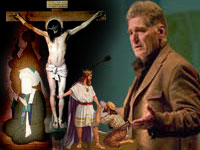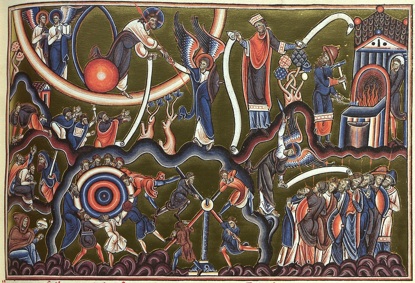From:
Scienceblogs.com /
Cognitive NeuroscienceBy
Chris ChathamCaffeine is the most widely used stimulant in the world, but few use it to maximal advantage. Get optimally wired with these tips.
1) Consume in small, frequent amounts.Between 20-200mg per hour may be an optimal dose for cognitive function. Caffeine crosses the blood-brain barrier quickly (owing to its lipid solubility) although it can take up to 45 minutes for full ingestion through the gastro-intestinal tract. Under normal conditions, this remains stable for around 1 hour before
gradually clearing in the following 3-4 hours depending on a variety of factors.
A landmark
2004 study showed that small hourly doses of caffeine can support extended wakefulness, potentially by counteracting the homeostatic sleep pressure, which builds slowly across the day and acts
preferentially on the prefrontal cortex (an area of the brain thought responsible for executive and "higher" cognitive functions). At doses of 600mg, caffeine's effects on cognitive performance are often
comparable to those of modafinil, a best-of-class nootropic.
2) Play to your cognitive strengths while wired.Caffeine may increase the speed with which you work, may decrease attentional lapses, and may even benefit recall - but is less likely to benefit more complex cognitive functions, and may even hurt others. Plan accordingly (and preferably prior to consuming caffeine!) Caffeine has long been known to improve vigilance, but work focusing on its more more cognitive effects - through interactions with the "frontal task network" - show less clear effects.
In tests of lateral prefrontal function, caffeine only remediates some fatigue-related symptoms. For example, in a random number generation task (a commonly-used measure of prefrontal function), caffeine increased the quantity of numbers generated to pre-fatigue levels, but did not significantly affect
more demanding aspects of performance: caffeine didn't affect the likelihood of subjects generating numbers outside the acceptable range, or their tendency to perseverate on particular numbers.
Another
study indicates the same is true of caffeine's effect on the medial prefrontal cortex. In that study, sleep deprivation-related decrements on the Iowa Gambling Task were not mitigated by caffeine.
The Stroop task, which a wealth of neuroimaging shows is related to functioning of the anterior cingulate, may also benefit from caffeine, but this effect may also be due to
general speed improvements rather than those of cognitive control specifically.
(Interestingly, it appears that none of these studies follow guideline #1 - and there are hints in the second one that subject's performance might have shown significant improvements if another dose of caffeine had been provided about half-way through the task).
Recall from memory may be improved by caffeine (
here and
here), possibly
due to enhancements in memory encoding rather than retrieval per se. Another study
shows caffeine can actually impair estimates of "memory scanning" speed (in the Sternberg paradigm), so the failure of many studies to find recall-related effects of caffeine may reflect a speed-accuracy tradeoff at the time of retrieval.
3) Play to caffeine's strengths.Caffeine's effects can be maximized or minimized depending on what else is in your system at the time. The beneficial effects of caffeine may be most pronounced in conjunction with sugar. For example, one factor analytic study has
shown caffeine-glucose cocktails provide benefits to cognition not seen with either alone.
Some flavonoids (such as soy) may act in the same way as caffeine - i.e., through adenosine receptor antagonism - in particular
galangin,
genistein, and
hispidol. Evidence showing that markers of caffeine metabolism are
slowed by flavonoids might suggest that ingestion of flavonoids would enhance the effects of caffeine - some studies show
grapefruit juice might keep caffeine levels in the bloodstream high for longer, though others have
found no such effect (thanks to commenter Matt McIntosh for this latter reference).
Caffeine's effects
might be masked by green tea extract, Kava Kava or St. John's Wort - all of which contain theanine and are associated with subjective feelings of relaxation - but other
preliminary evidence indicates the opposite effect: theanine might actually potentiate the benefits of caffeine on some tasks (reported in
longer format here). Similarly, nicotine may speed the
metabolism of caffeine.
Because caffeine is a competitive antagonist for adenosine 1 & 2a primarily at striatal sites, it may also
selectively increase the efficacy of D2 receptors, given evidence that D2 depleted mice show
reduced effects of caffeination. According to
theoretical computational models of D2 receptor activity in the striatum, this should increase cortico-thalamic excitability. It will be important for future work to examine caffeine's effect on tasks thought to require NoGo pathway activity. A variety of other chemicals
may work on the A2 receptor in similar (
SCH 58261,
ZM 241385,
CSC,
KF17837) or opposing ways (
CGS 21680,
APEC,
2HE-NECA).
4) Know when to stop - and when to start again.
Although you may not grow strongly tolerant to caffeine, you can become dependent on it and suffer withdrawal symptoms. Balance these concerns with the cognitive and health benefits associated with caffeine consumption - and appropriately timed resumption.
Long-term ingestion of large quantities of caffeine (by way of coffee) is associated with a variety of health benefits - not only
cognitive enhancements but also reduction in risk for
type 2 diabetes (
c.f.),
Alzheimer's and
Parkinson's . These beneficial effects may be related to the
neuroprotective role of adenosine.
However, there are some suggestions that caffeine also has adverse effects (mostly
cardiovascular, which might be
balanced by flavonoids - see guideline #3). And some people just don't like the thought of cultivating an addiction - or the spectre of withdrawal symptoms.
Some
evidence indicates high heritability for caffeine addition (note: this is based on interviews of twins) and others are
advocating the recognition of caffeine addiction as a bona fide mental disorder. Withdrawal symptoms can onset within 12 to 24 hours of caffeine consumption and last between 2 and 9 days.
There are more cognitive concerns here as well. For one, caffeine probably follows the
Yerkes-Dodson law, in which a moderate dose is superior to too little or too much. In addition, there are
well-established cognitive effects where recall is best when it matches the context of encoding - so if you're caffeinated when you study for the test, you better be caffeinated when you take it.
5) Finding good sources of caffeineDespite the huge variety of
sources of caffeine - including caffeinated
soap,
candy, and of course chocolate - the optimal use of caffeine is likely to involve small, hourly doses along with some cardioprotective agent. Given the high solubility of caffeine, absorption time should not be an issue (but if for some reason it is, try
gum). Otherwise, why not enjoy a cup of green tea (
coffee-flavored, if you must), as the Chinese have for nearly
5000 years? It's hard to come by a better longitudinal study than that.

















